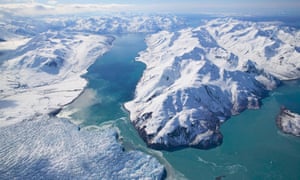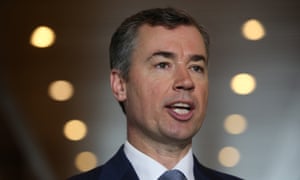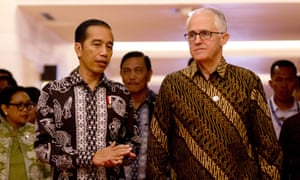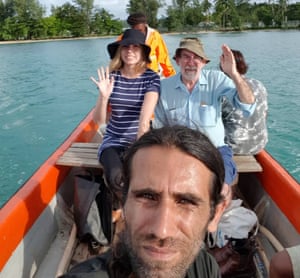Extract from ABC News
In the split second after I tripped while out running on the weekend,
I knew I was going to do an excellent job of skinning my knee.
And I did. I skidded down the gravelly track, sprawled on my belly, coming to a stop a couple of metres from the tree root that I had failed to see in time.
As predicted, blood started oozing from a scrape about the size of a 50 cent coin at the top of my kneecap.
But within a couple of minutes, it had already started to seal off. And as I trotted back to the car, I thought: what's going on underneath my scab?
And will it heal as quickly as all those skinned knees I had as a kid?
"Something like a graze on your knee would be an acute wound and go through the four stages of wound healing," he said.
The first stage, called haemostasis, is to stop you from losing too much blood. Special sticky blood cells called platelets bunch together to create a plug.
"Bleeding should stop in about eight minutes, depending on the size of the wound," Dr Kopecki said.
Hot on the heels is the next healing phase: inflammation.
Skin cells secrete tiny proteins called cytokines, which attract the body's clean-up crew: white blood cells called neutrophils and macrophages.
They tidy up the wounded patch and help fight infection by eating pathogens, dead cells and other debris that might get in the way of the healing process.
Dr Kopecki said the inflammatory phase can continue for up to three days.
If inflammation doesn't subside, that's when the injury becomes a chronic wound.
Next up is proliferation. At this point, cells called fibroblasts occupy the wound and construct tissue, including collagen fibres, which give skin its elasticity and structure.
If you've ever wondered why scrapes and sores tend to heal inwards from the edges, it's because fibroblasts divide from the healthy skin at a wound's fringes, then travel beneath the scab towards the centre, leaving collagen-rich scar tissue in their wake, Dr Kopecki said.
And as the scab lifts, it begins to itch. And while it's tempting to have a bit of a scratch or pick at the scab at this point: don't.
If the wound starts bleeding again, you're back to square one.
"The best thing you can do is moisturise," Dr Kopecki said.
Finally, we get to remodelling, the longest of the phases, which can take months.
This is when the body rearranges collagen fibres, which were laid down quickly and haphazardly during the proliferation phase to create scar tissue.
During remodelling, the fibres end up lying parallel to each other and the scar flattens.
This parallel arrangement is the reason scar tissue is only around 80 per cent the tensile strength of healthy skin, Dr Kopecki said. Collagen in unbroken skin is laid down in a much stronger basket weave pattern.
Some people end up with bulging scar tissue, called keloid scars.
"They're completely benign. All it means is in the remodelling phase, a wound doesn't get the signal to stop secreting collagen, so you end up with a big scar," Dr Kopecki said.
There's evidence that gels containing silicone can help here, he added.
"Silicone regulates fibroblast production, so you get a softer and flatter scar."
Massaging scars can help minimise them too.
"You can think of understanding wound healing as like a big jigsaw. We can see the overall picture, but there's a whole bunch of pieces missing," he said.
For instance, the function of the scab itself has researchers scratching their head.
Its obvious role is to protect against infection. But the formation of a dry scab might not be the best way for a wound to heal.
They typically repair better if they're covered with a dressing and kept moist.
"It's full of proteins and how it functions, we don't know. We're still working out parts of the fine molecular detail."
If you think you don't heal as quickly as you did when you were a kid, there's probably something in that too, according to Dr Parker.
"Kids do heal faster," he said. "Cell replication and proliferation don't occur as well in older people compared to young cells."
The reasons for this aren't fully understood either, but the fact that a child's skin needs to keep up with their development probably has something to do with it.
"Very, very young children, like toddlers or infants, are rapidly growing and expanding as they grow, so their skin grows with them, whereas adults don't increase their surface area all that much," Dr Parker said.
"So while they do heal, the healing process seems to slow down in older adults."
In much older people, wound healing can be a real problem. As we age, our skin becomes thinner, almost papery, and tears more easily.
On top of that, there's just not enough tissue to get the healing ball rolling quickly. Throw in poor circulation, and acute wounds can become chronic, sometimes lasting decades.
At the other end of the age spectrum, foetuses up to the third trimester are able to heal not by repair, but by regeneration.
So instead of ending up with scar tissue, a wound will heal to include sweat glands and hair follicles, Dr Kopecki said.
"We're trying to understand how we can develop therapies which will move from repair to regeneration," he said.
And I did. I skidded down the gravelly track, sprawled on my belly, coming to a stop a couple of metres from the tree root that I had failed to see in time.
As predicted, blood started oozing from a scrape about the size of a 50 cent coin at the top of my kneecap.
But within a couple of minutes, it had already started to seal off. And as I trotted back to the car, I thought: what's going on underneath my scab?
And will it heal as quickly as all those skinned knees I had as a kid?
Time (usually) heals all wounds
The job of the skin is to close a wound as quickly as it can to prevent infection, but that comes with the expense of getting a scar, said Zlatko Kopecki, a wound repair biologist at the University of South Australia."Something like a graze on your knee would be an acute wound and go through the four stages of wound healing," he said.
The first stage, called haemostasis, is to stop you from losing too much blood. Special sticky blood cells called platelets bunch together to create a plug.
"Bleeding should stop in about eight minutes, depending on the size of the wound," Dr Kopecki said.
Hot on the heels is the next healing phase: inflammation.
Skin cells secrete tiny proteins called cytokines, which attract the body's clean-up crew: white blood cells called neutrophils and macrophages.
They tidy up the wounded patch and help fight infection by eating pathogens, dead cells and other debris that might get in the way of the healing process.
Dr Kopecki said the inflammatory phase can continue for up to three days.
If inflammation doesn't subside, that's when the injury becomes a chronic wound.
Next up is proliferation. At this point, cells called fibroblasts occupy the wound and construct tissue, including collagen fibres, which give skin its elasticity and structure.
If you've ever wondered why scrapes and sores tend to heal inwards from the edges, it's because fibroblasts divide from the healthy skin at a wound's fringes, then travel beneath the scab towards the centre, leaving collagen-rich scar tissue in their wake, Dr Kopecki said.
And as the scab lifts, it begins to itch. And while it's tempting to have a bit of a scratch or pick at the scab at this point: don't.
If the wound starts bleeding again, you're back to square one.
"The best thing you can do is moisturise," Dr Kopecki said.
Finally, we get to remodelling, the longest of the phases, which can take months.
This is when the body rearranges collagen fibres, which were laid down quickly and haphazardly during the proliferation phase to create scar tissue.
During remodelling, the fibres end up lying parallel to each other and the scar flattens.
This parallel arrangement is the reason scar tissue is only around 80 per cent the tensile strength of healthy skin, Dr Kopecki said. Collagen in unbroken skin is laid down in a much stronger basket weave pattern.
Some people end up with bulging scar tissue, called keloid scars.
"They're completely benign. All it means is in the remodelling phase, a wound doesn't get the signal to stop secreting collagen, so you end up with a big scar," Dr Kopecki said.
There's evidence that gels containing silicone can help here, he added.
"Silicone regulates fibroblast production, so you get a softer and flatter scar."
Massaging scars can help minimise them too.
How well you repair can depend on your age
It might seem like we have tissue repair all worked out, but there are still plenty of questions that need solving, Queensland University of Technology wound repair biologist Tony Parker said."You can think of understanding wound healing as like a big jigsaw. We can see the overall picture, but there's a whole bunch of pieces missing," he said.
For instance, the function of the scab itself has researchers scratching their head.
Its obvious role is to protect against infection. But the formation of a dry scab might not be the best way for a wound to heal.
They typically repair better if they're covered with a dressing and kept moist.
"It's full of proteins and how it functions, we don't know. We're still working out parts of the fine molecular detail."
If you think you don't heal as quickly as you did when you were a kid, there's probably something in that too, according to Dr Parker.
"Kids do heal faster," he said. "Cell replication and proliferation don't occur as well in older people compared to young cells."
The reasons for this aren't fully understood either, but the fact that a child's skin needs to keep up with their development probably has something to do with it.
"Very, very young children, like toddlers or infants, are rapidly growing and expanding as they grow, so their skin grows with them, whereas adults don't increase their surface area all that much," Dr Parker said.
"So while they do heal, the healing process seems to slow down in older adults."
In much older people, wound healing can be a real problem. As we age, our skin becomes thinner, almost papery, and tears more easily.
On top of that, there's just not enough tissue to get the healing ball rolling quickly. Throw in poor circulation, and acute wounds can become chronic, sometimes lasting decades.
At the other end of the age spectrum, foetuses up to the third trimester are able to heal not by repair, but by regeneration.
So instead of ending up with scar tissue, a wound will heal to include sweat glands and hair follicles, Dr Kopecki said.
"We're trying to understand how we can develop therapies which will move from repair to regeneration," he said.













